Strings are a fundamental component in programming, especially in Python. They allow you to store and manipulate text data. In this guide, you will learn how to effectively edit and format strings, including the basic properties that you should know.
Key Insights
- You can determine the length of a string using the len function.
- Access to individual characters within a string is done through indices.
- Strings can be edited and formatted using methods like upper(), lower(), and split().
Step-by-Step Guide
Determining Character Lengths
To find the length of a string, you use the len() function. Suppose you have the text "Python is cool". To get the length, you would execute the following command:
len(Text)
Here, Text is the variable in which your string is stored. When you execute this command, you receive the number of characters in the string, including spaces and special characters.
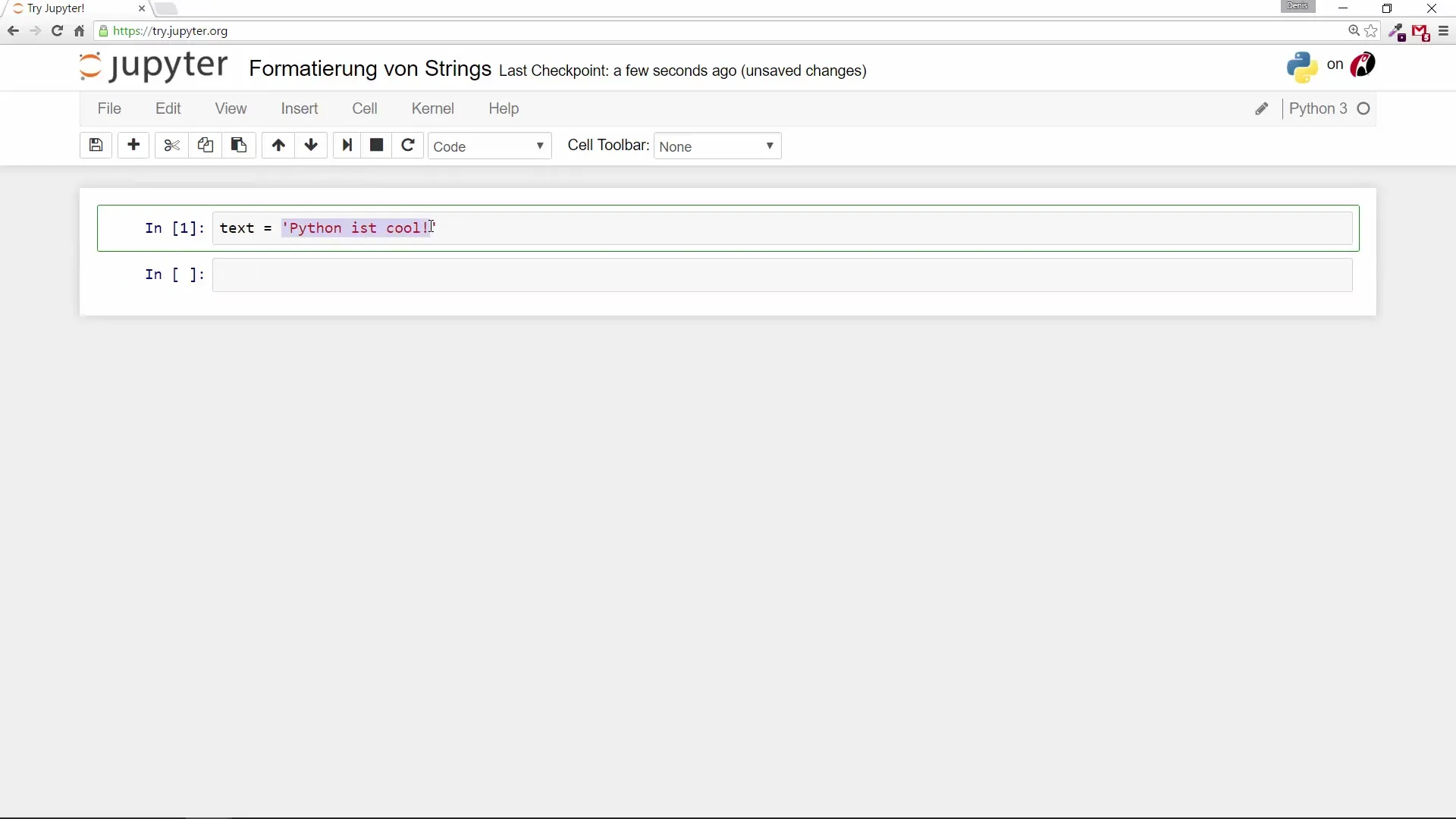
Accessing Individual Characters
An important aspect of strings in Python is accessing individual characters. You can access a character at a specific position by placing the index of the character in square brackets. Note that indexing in Python starts at 0. This means that to get the first character (e.g., "P"), you would do the following:
text[0]
This command returns the first character.
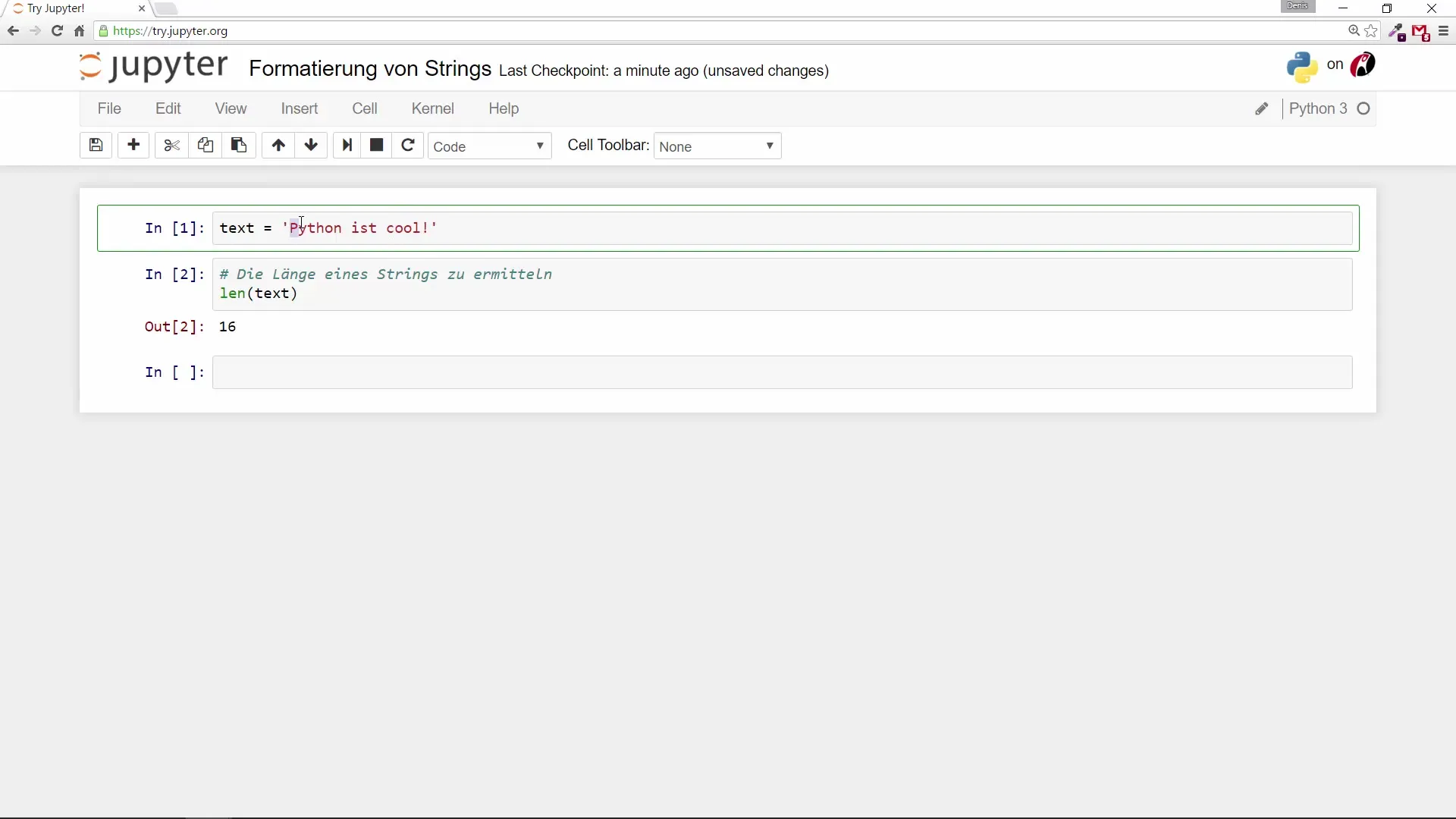
You can also use negative indices. An index of -1 corresponds to the last character. For example: text[-1] gives you the last character present in the string.
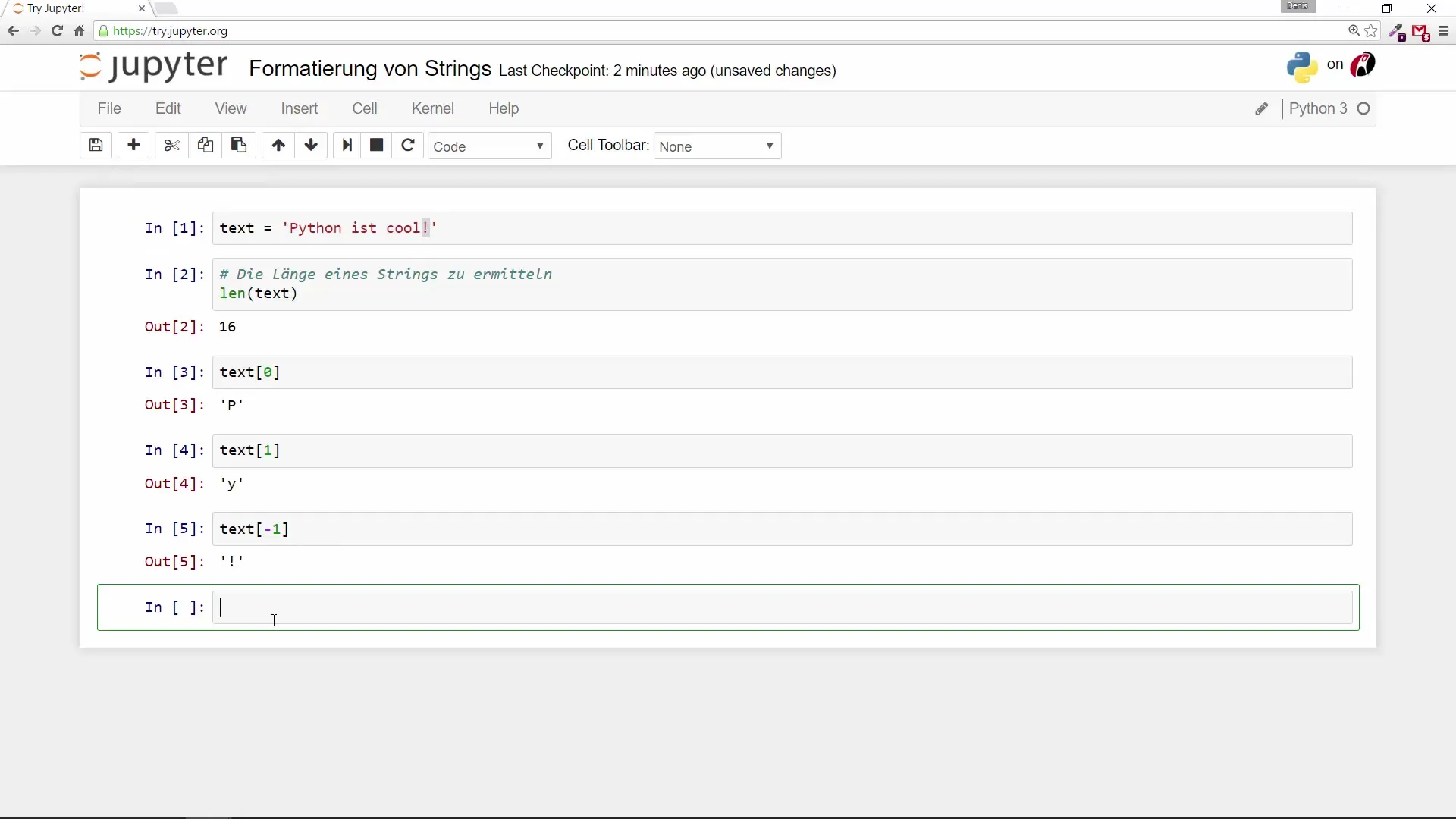
Outputting a Range of Characters
If you want to extract a range of characters from a string, you can use the so-called "slicing" mechanism.
This returns the characters between the third and seventh index.
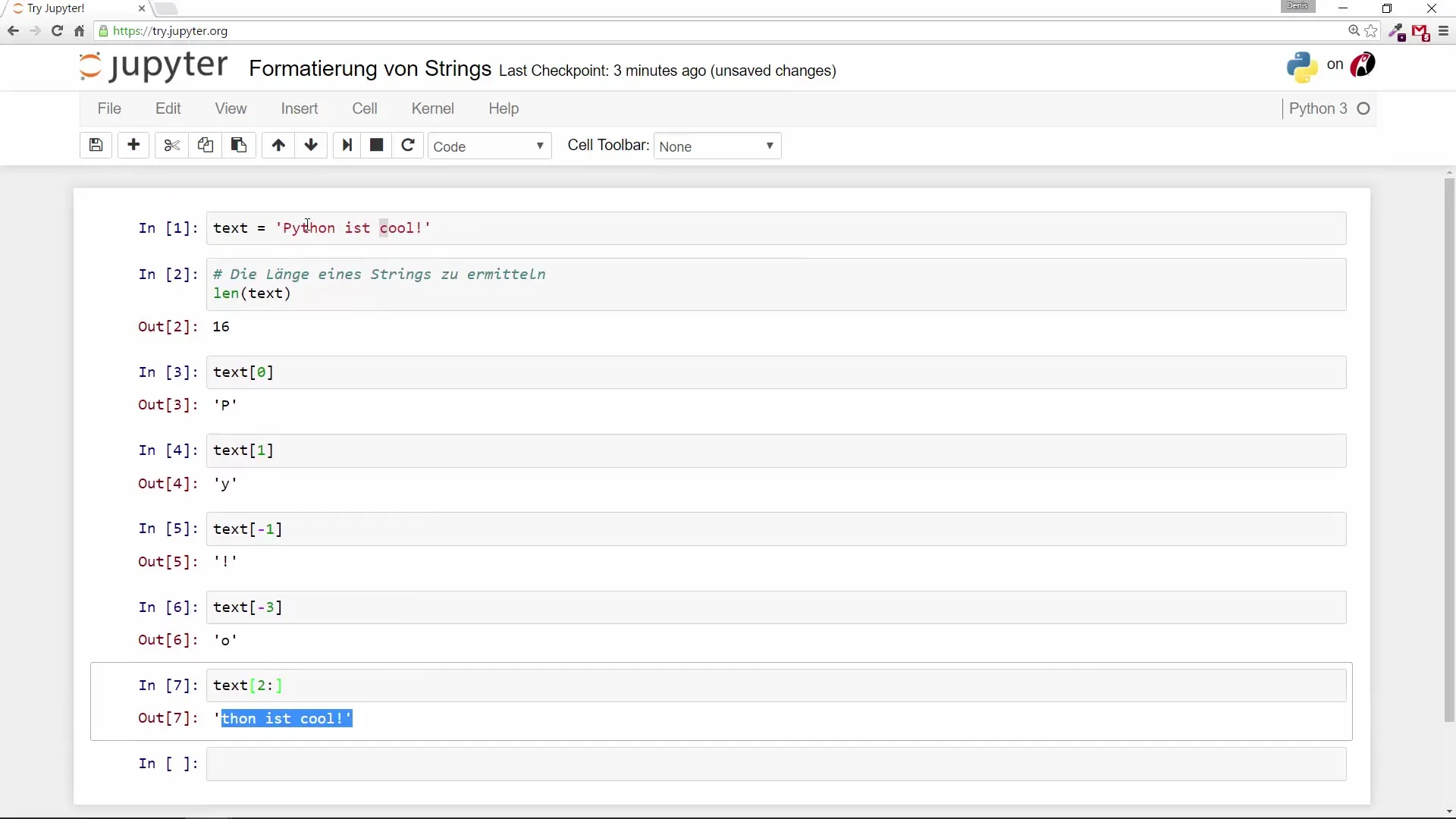
Stepwise Output of Characters
Another practical use of slicing is stepwise output of characters. For example, if you want every second character, you could use the following:
text[::2]
This gives you every second letter of the text and creates an interesting variation.
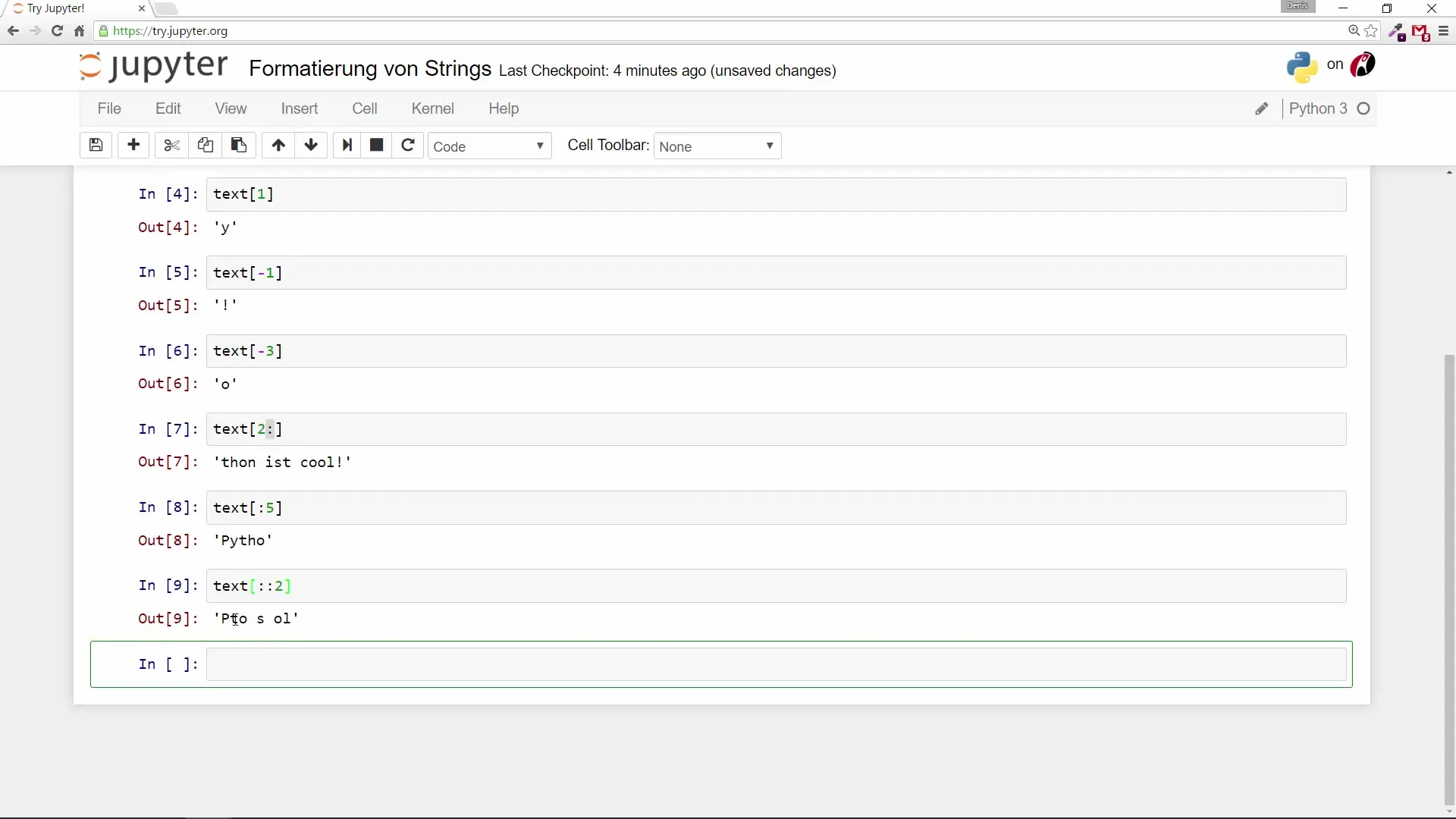
If you want to output the text in reverse, you could also use negative indices in combination with slicing:
text[::-1]
This will display the entire string in reverse order.
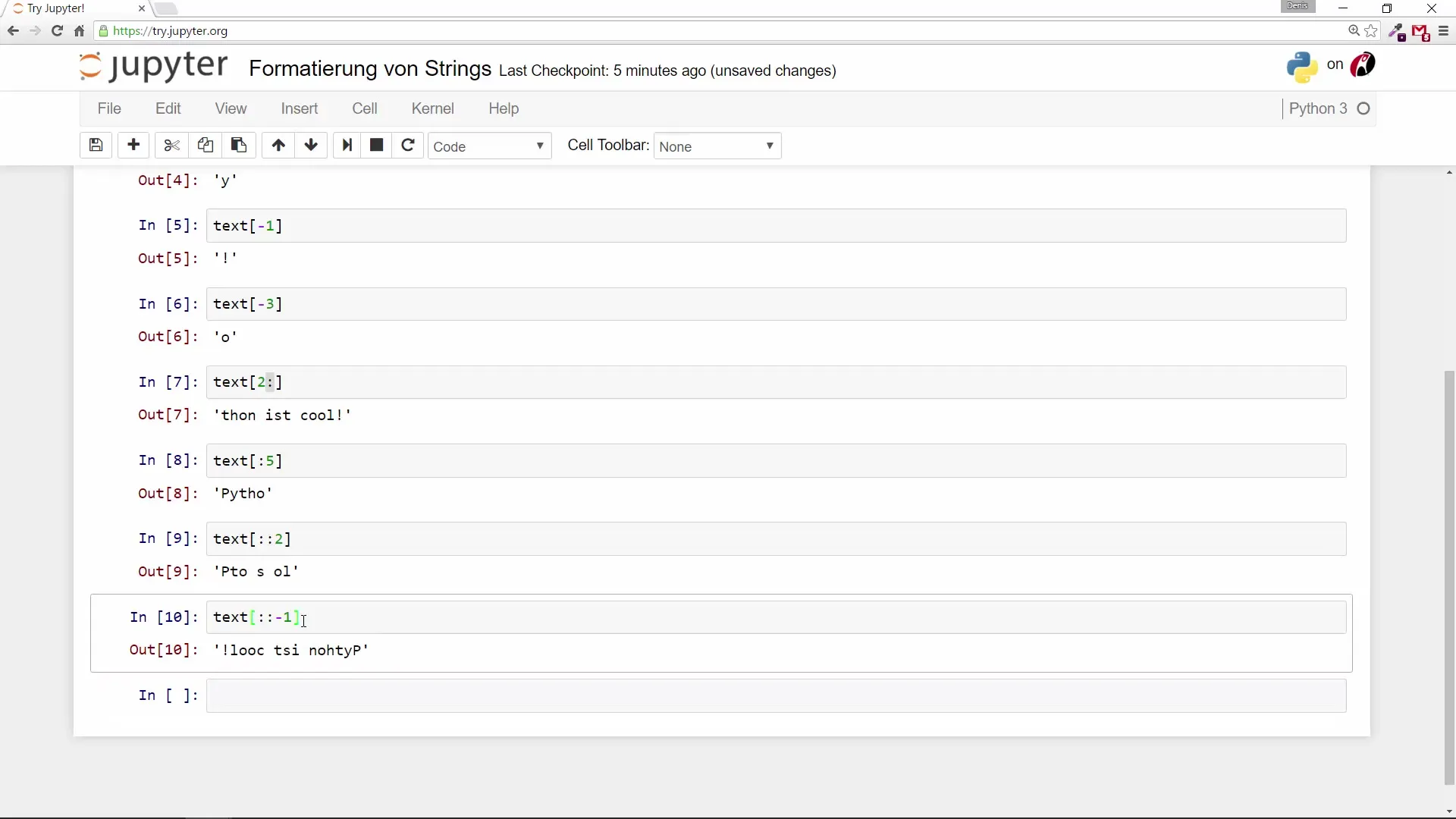
Changing Case
To convert all letters of a string to uppercase, you use the upper() method:
text.upper()
Conversely, you can do this with the lower() method for lowercase:
text.lower()
This allows you to standardize textual information.
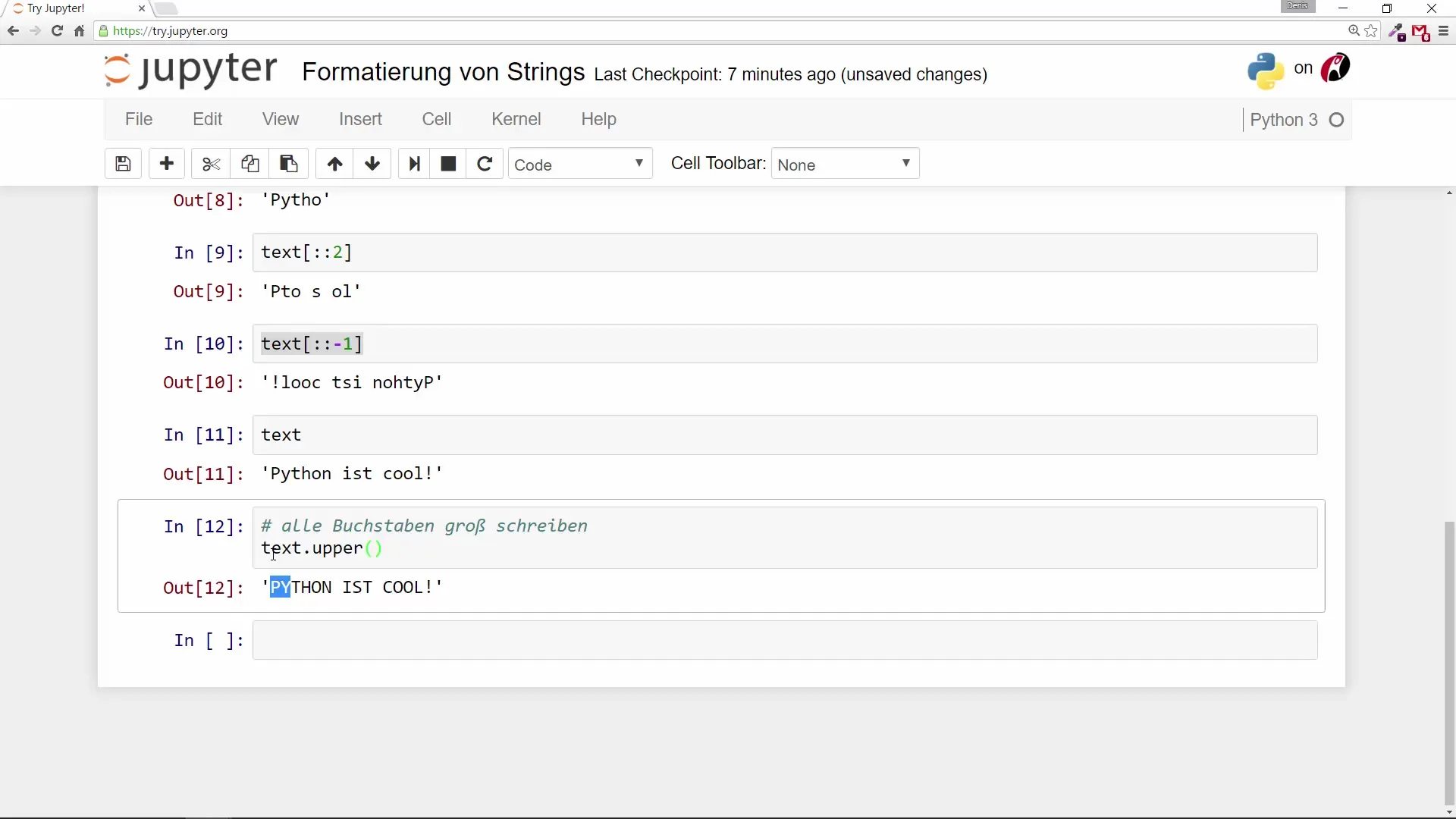
Splitting Strings
If you want to split a string based on specific delimiters, you can use the split() function. By default, split() separates at spaces:
text.split()
The result is a list of substrings that you can edit individually.
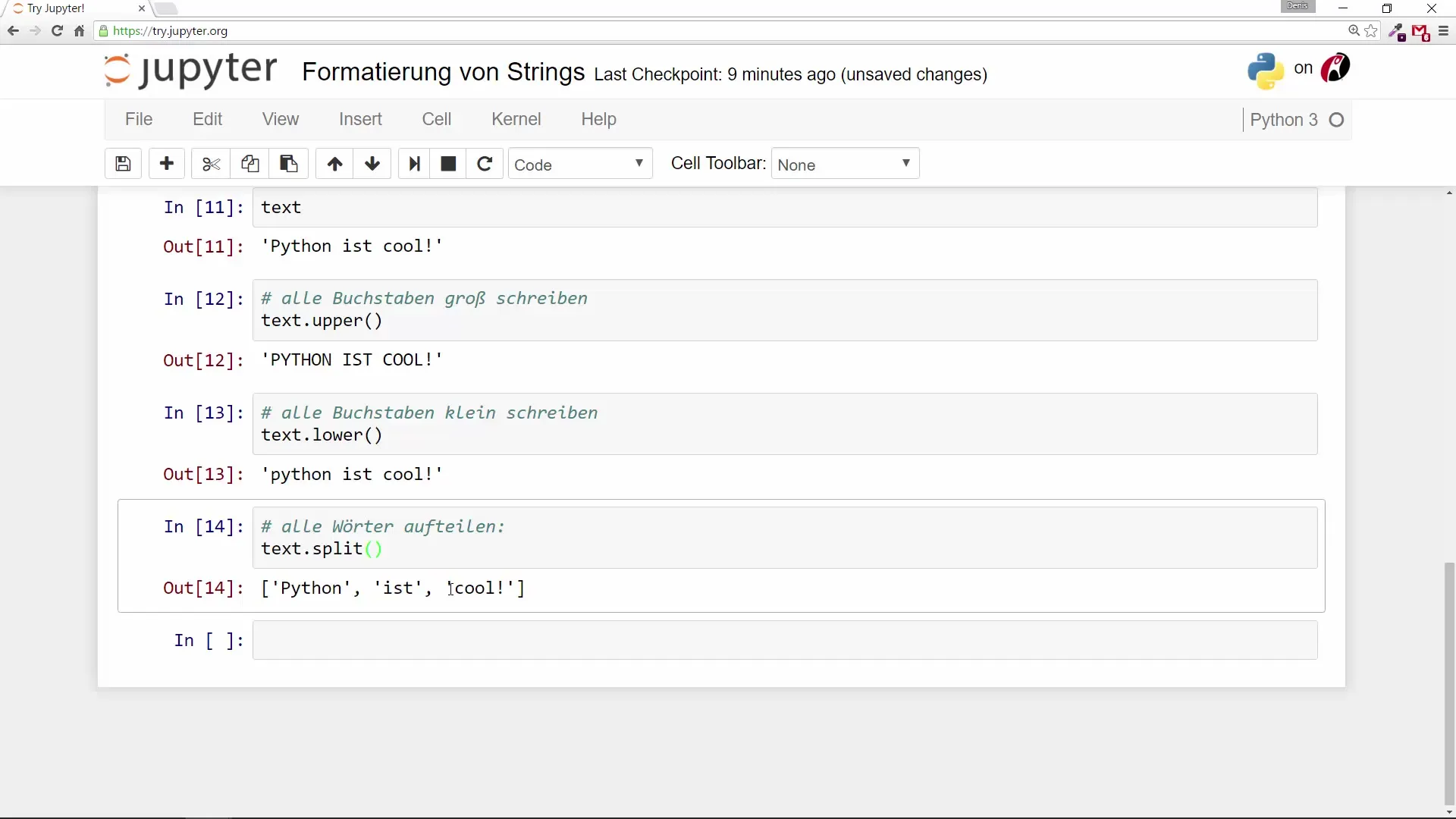
You can also customize split() for a specific character. If the string is e.g. "Python, is, cool" and you want to split at the comma:
text.split(',')
This gives you a list that contains the substrings separated by the comma.
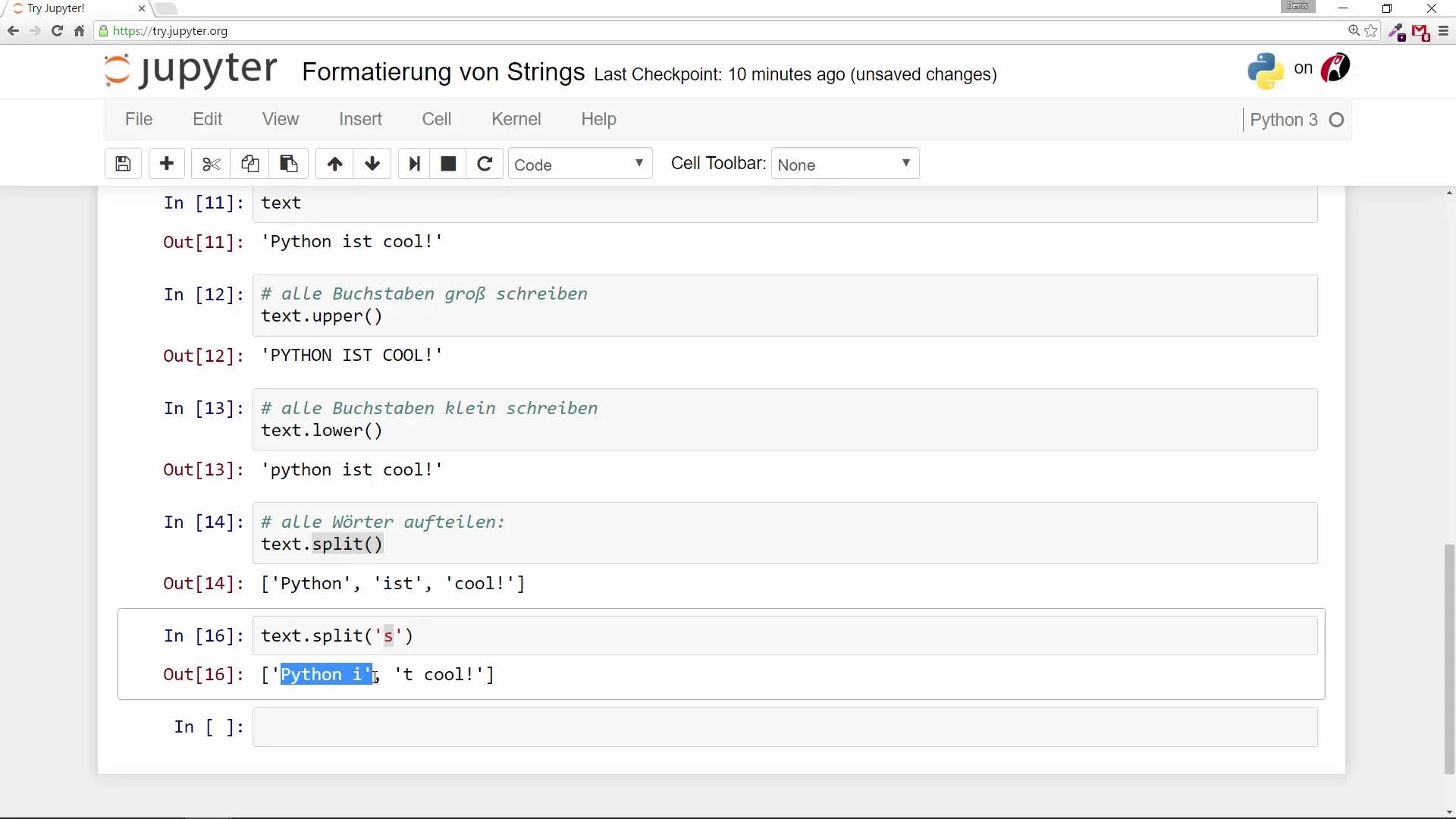
Adding to Strings
To add additional text to a given string variable, you use the assignment with the plus operator:
text = text + " or not"
This appends "or not" to the end of your existing string.
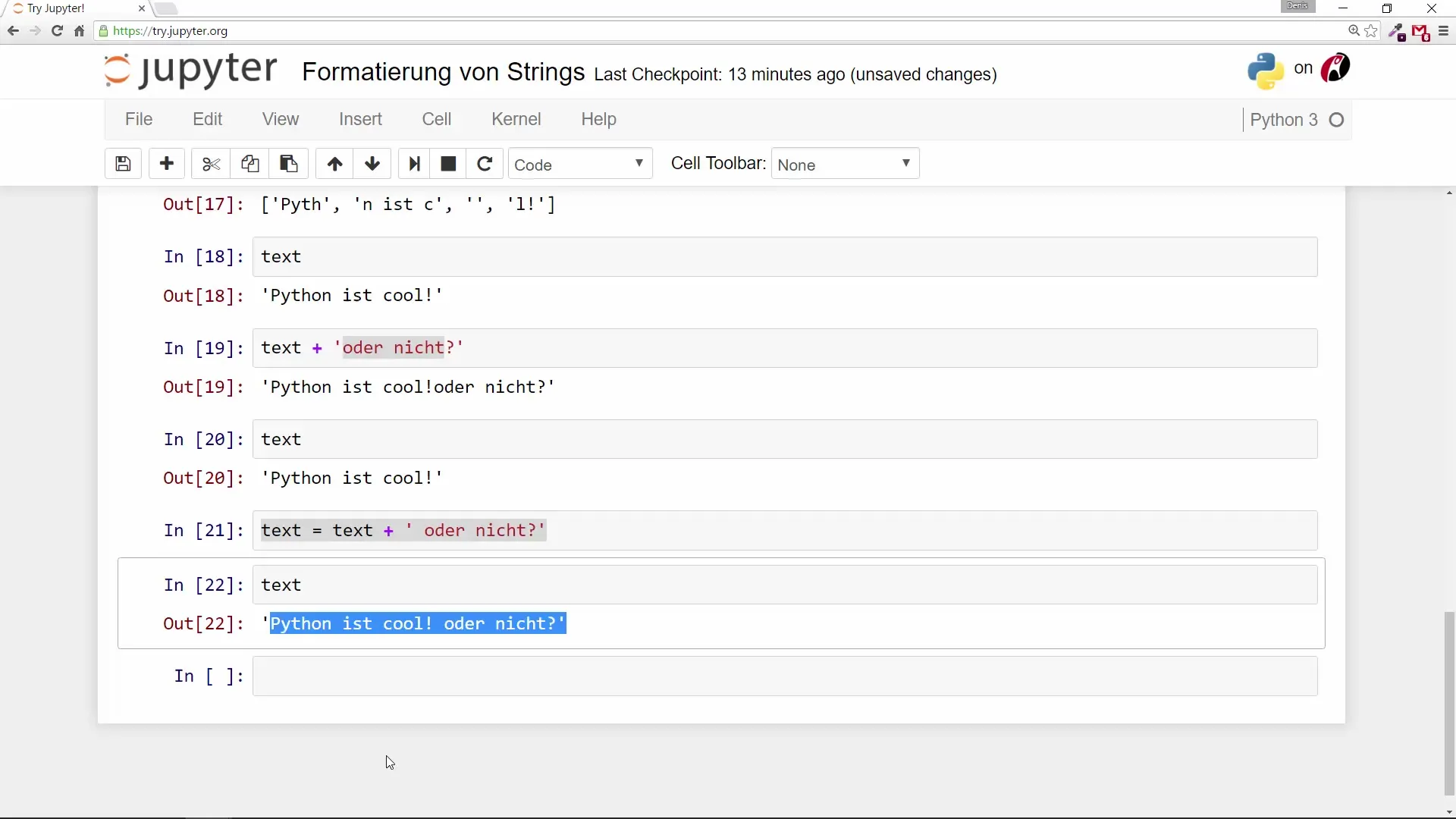
Summary – Strings in Python: Properties and Formatting
In this guide, you have learned about the various aspects of string manipulation in Python – from determining the length of a string to accessing individual characters and manipulating and formatting using methods like upper(), lower(), and split().
Frequently Asked Questions
How do I find the length of a string in Python?Use the function len(Text), where Text is your string variable.
How do I access the first character of a string?Use Text[0] to get the first character.
Can I convert strings to uppercase?Yes, by using the method text.upper().
How can I split a string?Use the split() method, e.g. text.split().
How do I add text to an existing string?Use Text = Text + " new text" to extend the string.


